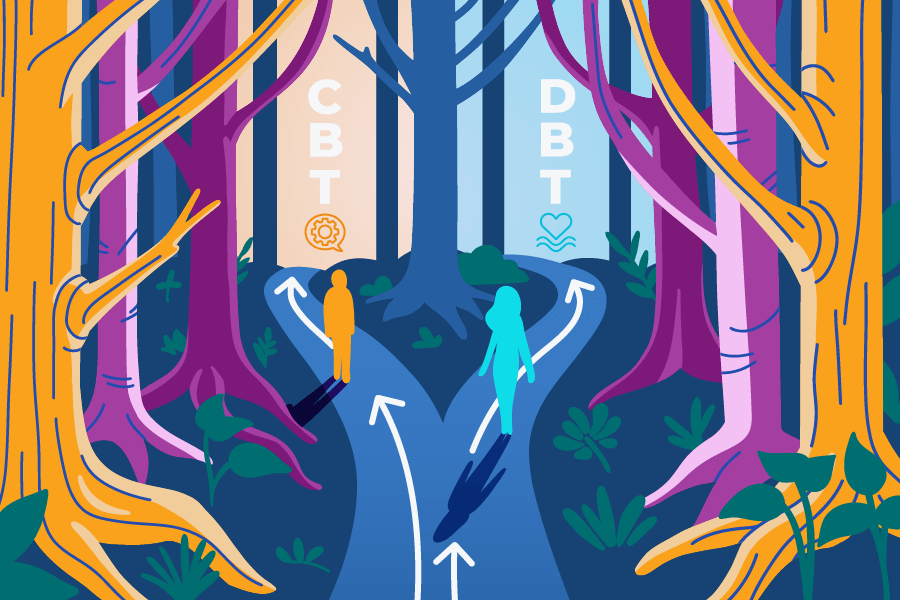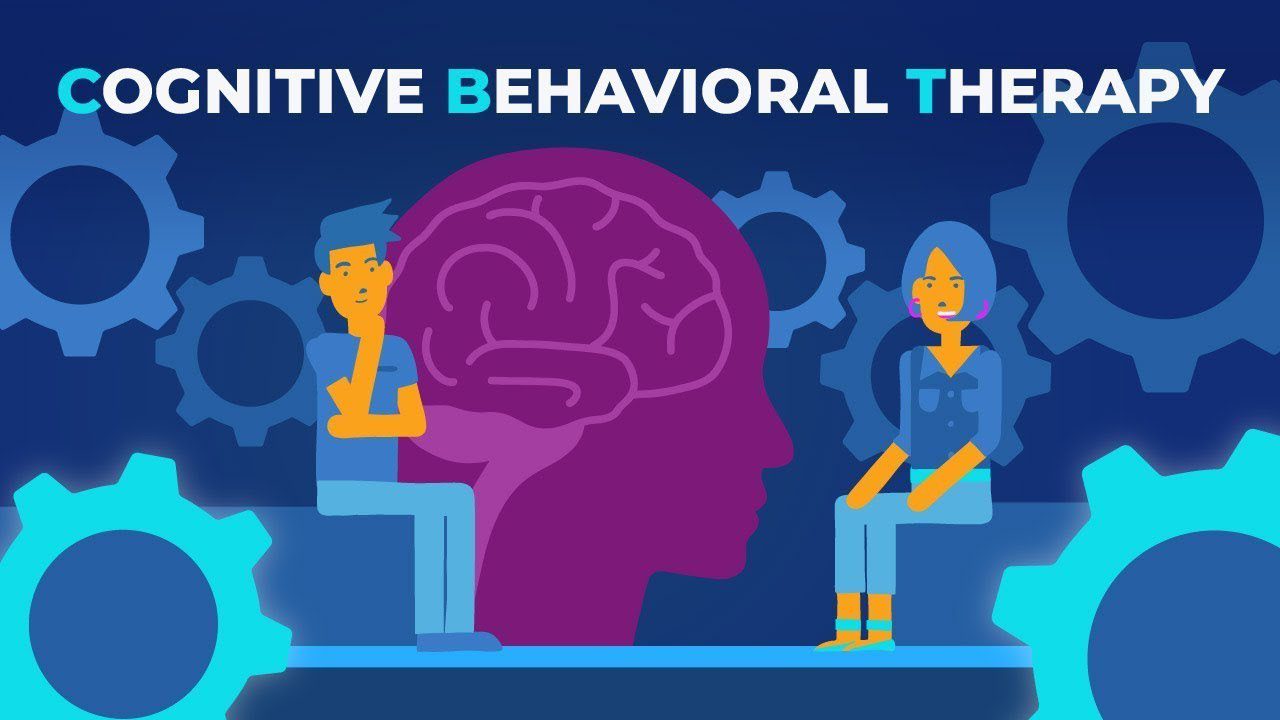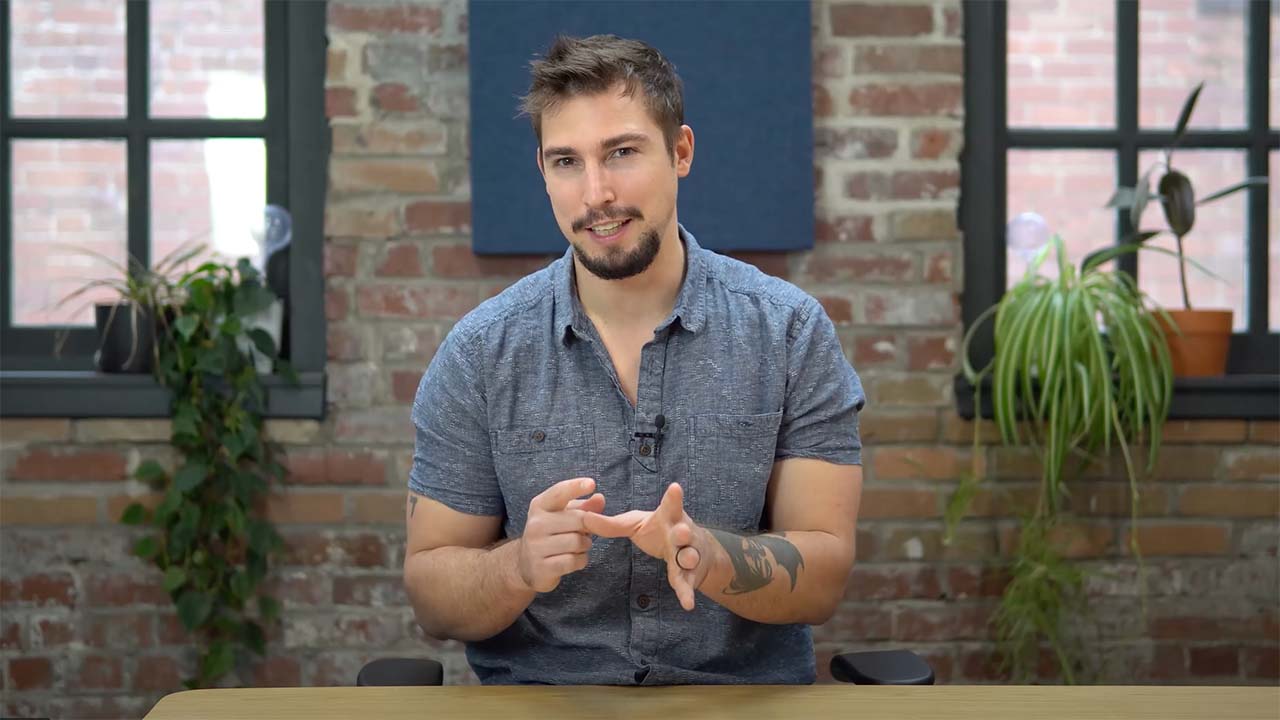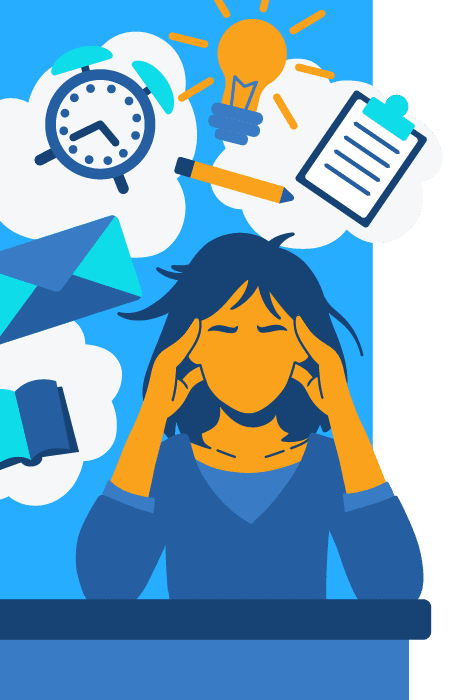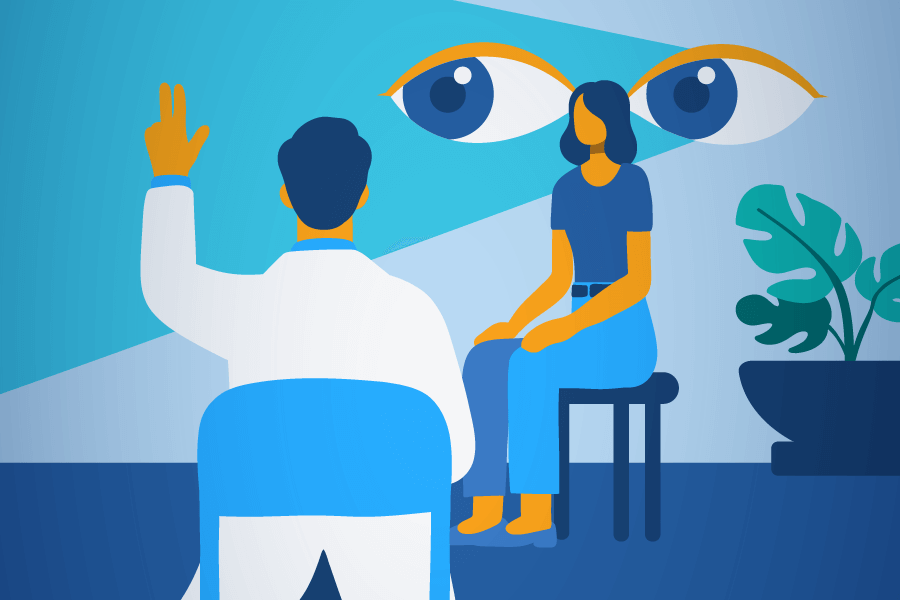CBT Vs. DBT
What Are the Main Differences Between CBT and DBT?
Cognitive behavioral therapy (CBT) and Dialectical Behavior Therapy (DBT) are similar in many ways and are both forms of psychotherapy, also known as talk therapy.
However, CBT and DBT have a few key differences that set them apart from each other.
One main difference is that CBT generally follows a more short-term timeline, whereas DBT tends to be a longer commitment, often one year.
The other main difference between the two is that CBT focuses on changing negative thought patterns, behaviors, and emotions, whereas DBT skills focus more on acceptance, mindfulness, and learning how to let these feelings and emotions go.
What Is a CBT Vs. DBT Example?
An example of the differences between CBT and DBT approaches can be when it is used for substance abuse.
With CBT, the therapist will work with the individual in identifying the thoughts and beliefs that contribute to the substance use and help them figure out a way to change these thoughts and beliefs so that they can change their behaviors.
The therapist might have them do things like journaling throughout the day to help them reflect on themselves and identify patterns so that they can begin problem-solving.
With DBT, the therapist will help identify negative thoughts and behavior patterns, but the focus is on paying attention to the present moment, finding validation, and implementing skills to help regulate emotions and manage stress.
A DBT therapist might have the individual engage in distress tolerance techniques, such as physical activity, or practice mindfulness techniques, such as meditation and breathing exercises.
FIND THE RIGHT TREATMENT FOR YOU.
Call (888) 850-1890 to schedule your own personal assessment and find out exactly which therapy is right for you!
Is DBT More Effective Than CBT?
DBT and CBT are used for a wide variety of mental health conditions, and different types of therapy will be more helpful for different people depending on what mental health issues they are addressing.
The effectiveness of CBT or DBT therapy is based on the individual, their needs, and their unique situation.
For example, DBT might be more effective than CBT for someone with borderline personality disorder. But, CBT might be more effective for someone with depression or anxiety.
Can You Do DBT and CBT at the Same Time?
Since DBT is a form of CBT, some aspects and methods of both treatment options can overlap.
If a mental health professional thinks it is fitting for the individual, DBT and CBT can both be used in treatment at the same time.
CBT vs DBT Approaches
What Are the Main Approaches of DBT and CBT?
In both CBT and DBT, a therapist works with the individual to address the mental health challenges a person is experiencing and helps them learn skills to manage them.
Both therapies can happen in individual therapy or group therapy settings, and both typically involve some sort of coping skills training to help people navigate their triggers, dysregulation, and interpersonal relationships.
What Approach Does DBT Use?
DBT is focused on acceptance and change.
DBT strategies centered around acceptance involve mindfulness and distress tolerance. Change-focused strategies involve emotion regulation and interpersonal effectiveness.
The skills taught in DBT include:
- Mindfulness- learning how to be present and how to cope with stress and other difficult feelings
- Distress tolerance
- Emotion regulation
- Interpersonal effectiveness
What Approach Does CBT Use?
CBT is a combination of two therapeutic approaches: cognitive therapy and behavioral therapy.
Since CBT covers a wide range of techniques and methods, the approach it uses can vary based on the needs of the individual.
However, CBT is typically always centered around the way people think and behave and how other people make them feel.
Stages of CBT Vs. DBT
What Are the Four Stages of DBT Treatment?
The four stages of DBT treatment can include:
- Focusing on the foundational skills for emotion management, improving relationships, and working on impulsive behaviors. This can include addressing factors interfering with their well-being and replacing dysfunctional behaviors with more helpful ones.
- In this stage, the individual might be trying to control their behaviors and actions, but their emotions are not balanced and regulated. Here, support is given to help the person experience their emotions.
- Addressing life problems. In this stage, a person learns how to cope and solve everyday problems and challenges.
- Starting to feel more balance and completeness and achieving a higher level of daily functioning.
What Are the Four Stages of Cognitive Behavioral Therapy?
The four stages of CBT can include:
- Assessment: This stage involves the individual and therapist getting to know one another and also involves the development of a treatment plan.
- Cognitive: In this stage, the individual and the therapist work together to understand the individual’s thoughts. They might recall experiences or talk about how these experiences make the person feel or think.
- Behavior: In the behavior stage, the individual is taught how to develop new thinking patterns and apply them to new behaviors.
- Learning: In the learning stage, the individual and the therapist work together to implement these new thought and behavior processes to make sure the person can use them on their own to cope with future experiences, even when therapy is over.
How Long Does CBT Take?
CBT doesn’t have a “standard” length of treatment, but it is a short-term treatment.
Usually, individuals attend one session a week that typically lasts an hour. Some people might feel better after a couple of weeks of sessions, whereas others might feel better after several months.
How Long DBT Take?
Typically, DBT takes a minimum of 6 months to complete, but it is not uncommon for it to take a year or longer to finish.
These timelines may be different depending on whether or not therapy sessions are happening in a group setting or one-on-one with a therapist.
CBT Vs. DBT for ADHD
DBT Vs. CBT for ADHD?
When talking about which therapy is best for individuals with ADHD, it is important to remember that the best treatment depends on the individual and their unique needs.
Both DBT and CBT may be used as a way to help treat ADHD.
Attention-Deficit/Hyperactivity Disorder (ADHD) is a neurodevelopmental disorder that involves trouble paying attention, impulsive behaviors, and/or a high level of activity.
Studies show that cognitive behavioral therapy and dialectical behavior therapy interventions are both effective in managing the symptoms of ADHD.
Is DBT or CBT Better for ADHD?
Since CBT focuses on identifying and understanding negative or unhelpful thought patterns and learning to change them, CBT can be helpful for individuals with ADHD in managing their symptoms and learning how their thoughts impact their feelings and behaviors.
CBT can help individuals with ADHD learn how to change unhelpful thought and behavior processes.
On the other hand, focusing on emotion regulation, mindfulness, and distress tolerance in DBT can be effective in managing symptoms of ADHD as well.
If you or a loved one has ADHD and you are trying to figure out if DBT or CBT is better for you, talk with your healthcare provider or mental health professional to help guide you on what might be the better option for your specific needs.
Why Is CBT Not Used for ADHD?
Some have claimed that CBT was not effective for some children with ADHD because it can be difficult for children with ADHD to understand and utilize the skills that are involved with CBT.
However, studies have shown how CBT can help children and adolescents with ADHD improve core symptoms, leading to improved behaviors and daily function.
CBT Vs. DBT for Anxiety
Is DBT or CBT Better for Anxiety?
CBT is commonly used to treat mental health disorders like depression, anxiety, and obsessive-compulsive disorder.
Since CBT is more focused on changing unhelpful thought processes, and DBT focuses more on regulating difficult emotions, CBT might be a more effective option for generalized anxiety disorders and is more commonly used to treat depression and anxiety.
On the other hand, studies have found that CBT was effective in significantly reducing symptoms of depression and anxiety, yet DBT was more effective in improving executive function.
How Effective Is CBT for Severe Anxiety?
Studies have shown that CBT is highly effective in treating anxiety disorders.
DBT Vs. CBT for Depression
Is DBT or CBT Better for Depression?
Cognitive behavioral therapy is a common and effective treatment for depression.
Both CBT and DBT may be helpful in treating depression. CBT addresses and helps a person change negative thoughts and behaviors, which are a main component of depression. DBT, on the other hand, focuses on acceptance and learning how to cope with negative thoughts and feelings.
Deciding what is better between the two in treating depression is dependent on the individual’s needs and preferences.
What Are the Disadvantages of CBT for Depression?
One thing about different types of treatment is that what works for one person might not work for someone else.
Some of the disadvantages of CBT for depression can include:
- You get as much out of therapy as you put into it. In other words, if you are not really committed to therapy or willing to work through things, it might not produce the results you expected.
- Attending CBT sessions can take time out of your schedule and require sacrifice. However, it is important to prioritize your mental health and take the time to do these things if you need them because it only ends up impacting your health and well-being in the long run.
- CBT might not be the best for individuals with complex mental health conditions or difficulties with learning.

Is this blog hitting close to home?
We’re here to help.
DBT Vs. CBT for Bipolar
Is DBT or CBT Better for Bipolar?
Bipolar disorder involves episodes of mania, hypomania, and depression.
Studies have shown that DBT has been effective in decreasing the intensity of mania and reducing the severity of the individual’s depressed mood for those with bipolar I disorder. However, this study also showed how DBT had a slight or non-significant impact on improving depression, emotion-controlling anger, anxiety, and executive performance.
On the other hand, other studies have shown that both CBT and DBT have resulted in improved symptoms and overall well-being for individuals with bipolar disorder.
Is CBT Ineffective for Bipolar Disorder?
CBT has been shown to be effective in helping manage some of the symptoms of bipolar disorder.
For example, CBT has been shown to help improve depressive symptoms, mania severity, and functioning.
What Is the Success Rate of CBT for Bipolar?
Studies show that CBT can lower the relapse rate of bipolar disorder and improve depressive symptoms.
What Is the Success Rate of DBT for Bipolar?
Research has shown DBT to be effective in decreasing the intensity of mania in bipolar disorder.
Many studies analyze how DBT approaches used in therapy impact individuals with bipolar disorder and support high rates of satisfaction and improvement in mindfulness, distress tolerance, and well-being.
DBT Vs. CBT: Which is Right for You?
Why Would My Therapist Recommend DBT or CBT?
Your therapist takes into account a variety of different factors that influence how you might respond to a certain form of treatment.
These factors can help them offer you different options that can be fitting for you and offer you guidance on the next steps you can take.
A therapist might recommend DBT or CBT if you have been facing challenges with your mental health if you were diagnosed with a mental health disorder, or if you have a substance use disorder. These forms of therapy can help people facing challenges mentally, physically, and interpersonally.
When Would You Use DBT Over CBT?
Everyone responds differently to therapy.
What works for one person may not work for another person.
DBT can be a great option for people who may not see the desired results from CBT. Sometimes, it takes trying one form of therapy to figure out that it may not be the best for you and to try another form.
In some cases, DBT can be more beneficial for people who have trouble managing their emotions and who want to focus on their strengths and being present in the moment rather than focusing on negative thoughts and behaviors.
DBT is also commonly used to help treat individuals who might be experiencing suicidal thoughts or engaging in self-harming behaviors. So, in this case, CBT might be more effective than CBT.
To help you figure out whether DBT or CBT is right for you, it is best to consult with a mental health professional, such as a therapist or psychiatrist, to give guidance and advice on the steps you can take to get help.
Who Is DBT Appropriate For?
DBT is often used as a form of treatment for conditions that can include:
- Borderline personality disorder
- Depression
- Self-harm and harmful behaviors
- Suicidal thoughts and suicidal ideation
- Substance abuse
- Eating disorders
- Bipolar disorder
- Trauma
Who Is CBT Appropriate For?
CBT is an evidence-based treatment commonly used to help treat mental health conditions, including:
- Depression
- Anxiety disorders
- Phobias
- Obsessive-compulsive disorder (OCD)
- Substance use disorders
- Eating disorders
- Trauma
- Post-traumatic stress disorder (PTSD)

